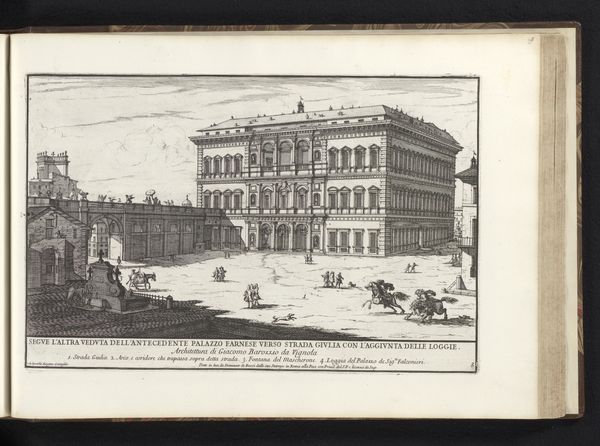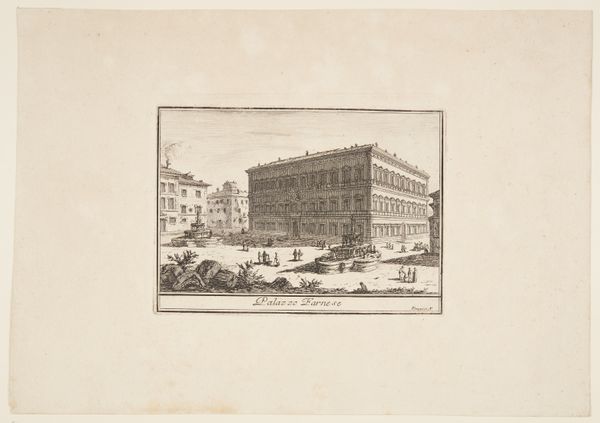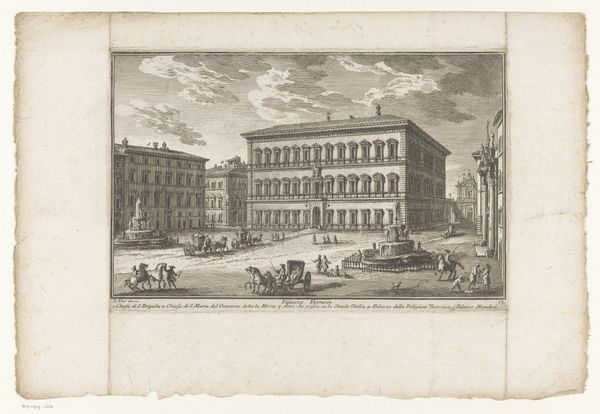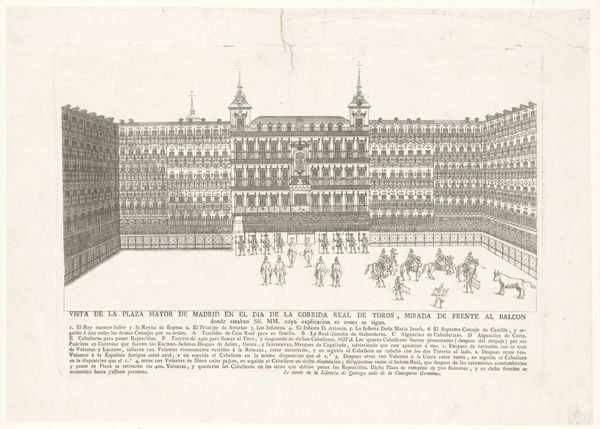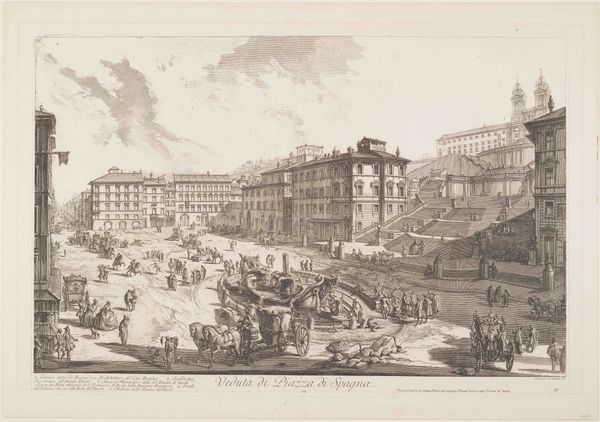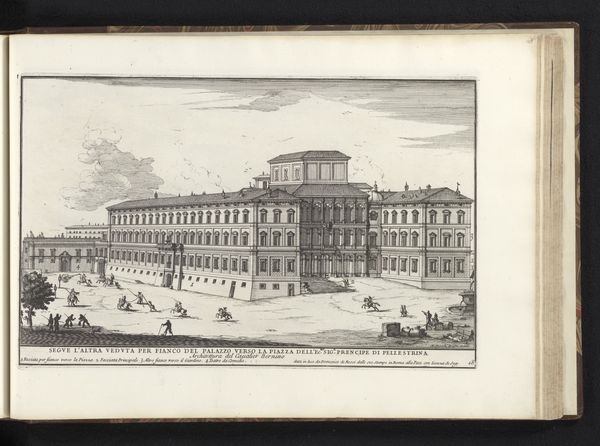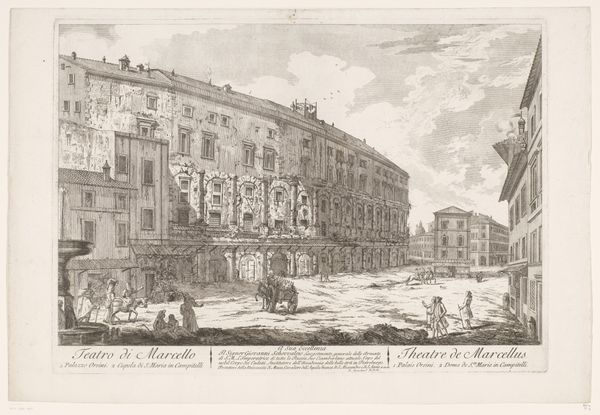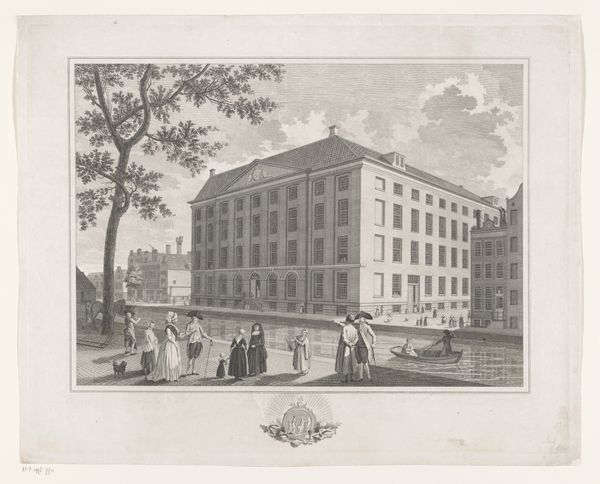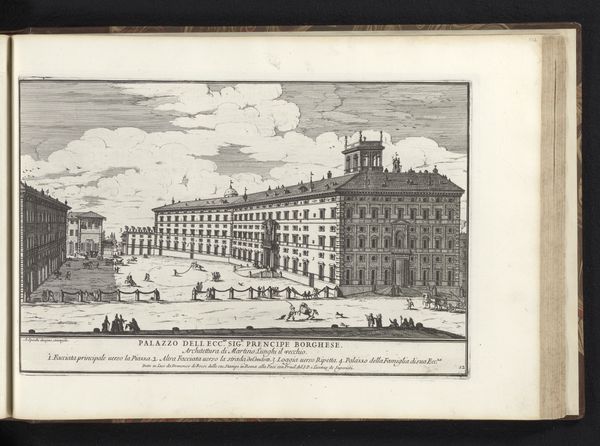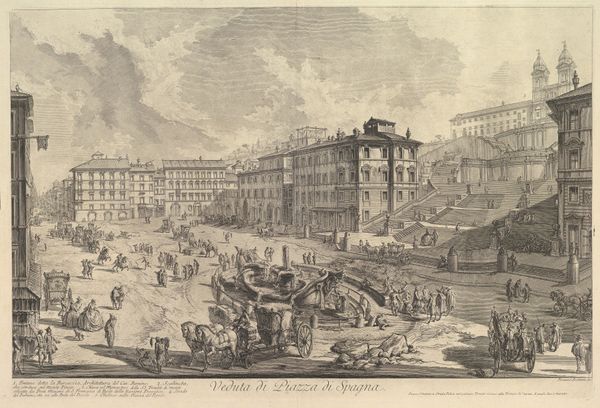
A bull fight in the Plaza Mayor, Madrid, on June 22 1833 in the presence of Isabel II 1833
0:00
0:00
drawing, print, engraving
#
drawing
# print
#
romanticism
#
cityscape
#
genre-painting
#
history-painting
#
engraving
Dimensions: Sheet: 19 5/16 × 24 13/16 in. (49 × 63 cm) Image: 12 5/8 × 18 7/8 in. (32 × 48 cm)
Copyright: Public Domain
Curator: This engraving by Henri-Pierre-Léon-Pharamond Blanchard, created in 1833, captures "A bull fight in the Plaza Mayor, Madrid, on June 22 1833 in the presence of Isabel II." The piece offers a fascinating snapshot of a pivotal cultural event. Editor: My initial reaction is drawn to the composition, particularly how the architecture dwarfs the human drama unfolding below. There's an almost suffocating sense of enclosure created by the dense, repetitive window patterns. It's striking, but perhaps unsettling. Curator: It is! And that tension you observe, between spectacle and setting, reflects much about the societal dynamics of the era. Blanchard was documenting not merely a bullfight, but a ritual performance deeply embedded in the politics and social hierarchies of 19th-century Spain, note Isabel II's presence as a clear legitimizing marker. Editor: Right. The artist has certainly made interesting choices about proportion and point of view, the sheer busyness and chaotic scene below becomes textural against that calm architecture; could you expand more on how it’s working? Curator: Well, bear in mind this event—Isabel II’s presence underscores the monarchy's effort to engage in a popular spectacle. Public events like these were critical in building support and fostering national identity, particularly during a period of political instability. Consider the composition also—the sheer mass of onlookers serves not just as observation but active participation in consolidating power, reflecting and amplifying monarchial sway through a social feedback loop. Editor: I see how that contextual reading shapes how we perceive the formal qualities. Before I was simply seeing the image as having many individual pieces making a complex whole, yet considering them separately. Now I see each figure, architectural components, working to establish the socio-political context! Is the fact this is an engraving a point worth stressing? Curator: Absolutely. The choice of engraving, rather than painting, speaks to the democratizing function of art. Engravings allowed for wider dissemination and broader engagement. Editor: A vital insight. This close analysis really enriches our understanding beyond just the aesthetic qualities of this visual spectacle! Curator: Agreed. It reminds us that artworks are seldom purely aesthetic exercises; they are always in conversation with the socio-political forces that shape their creation and reception. Editor: Exactly—and examining these elements enables the viewers to build their understanding of our world.
Comments
No comments
Be the first to comment and join the conversation on the ultimate creative platform.
